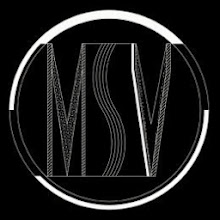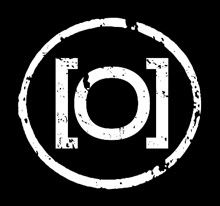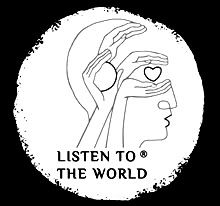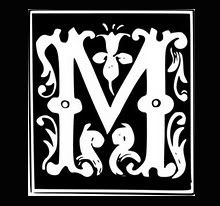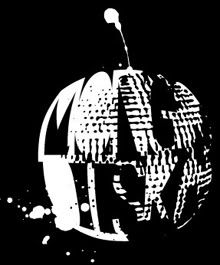Acid House is a sub-genre of house music that emphasizes a repetitive, hypnotic and trance-like style, often with samples or spoken lines rather than sung lyrics. Acid house's core electronic squelch sounds were developed around the mid-1980s, particularly by DJs from Chicagowho experimented with the Roland TB-303 electronic synthesizer-sequencer. Acid house spread to the United Kingdom and continental Europe, where it was played by DJs in the acid house and later rave scenes. By the late 1980s, copycat tracks and acid house remixes brought the style into the mainstream, where it had some influence on pop and dance styles. Nicknamed "the sound of acid", acid house's influence on dance music is tangible considering the sheer number of electronic music tracks referencing acid house through the use of its sounds, including trance,Goa Trance, psytrance, breakbeat, big beat, techno, trip-hop and house music.
Roland TB- 303

Chicago acid house movement
The first influential acid house records were produced in Chicago, Illinois. Phuture, a group founded by Nathan "DJ Pierre" Jones, Earl "Spanky" Smith Jr., and Herbert "Herb J" Jackson, is credited with having been the first to use the TB-303 in the house music context (the instrument appeared as early as 1983 in disco via Alexander Robotnick). The group's 12-minute "Acid Tracks" was recorded to tape and was played by DJ Ron Hardy at the Music Box, where Hardy was resident DJ. Hardy once played it four times over the course of an evening until the crowd responded favorably. Chicago's house music scene was suffering from a massive crackdown on parties and events by the police. Sales of house records were dwindling and, by 1988, the genre was selling less than a tenth as many records as at the height of the style's popularity. However, house and especially acid house was beginning to experience a massive surge in popularity in Britain.
The London house-music scene
London's club Shoom opened in November 1987 and was one of the first clubs to introduce acid house to the clubbing public of the UK. It was opened by Danny Rampling and his wife. The club was extremely exclusive and featured thick fog, a dreamy atmosphere and acid house. This period began what some call the Second Summer of Love, a movement credited with a reduction in football hooliganism: instead of fights, football fans were listening to music, taking ecstasy, and joining the other club attendees in a peaceful movement often paralleled to the Summer of Love in San Francisco in 1967. Another club called Trip was opened in June 1988 by Nick Holloway at the Astoria in London's West End. Trip was geared directly towards the acid house music scene. It was known for its intensity and stayed open until 3 AM. The patrons would spill into the streets chanting and drew the police on regular occasions. The reputation that occurrences like this created along with the UK's strong anti-club laws started to make it increasingly difficult to offer events in the conventional club atmosphere. Considered illegal in London during the late 80s, after-hour clubbing was against the law. However, this did not stop the club-goers from continuing after-hours dancing. Police would raid the after-hour parties, so the groups began to assemble inside warehouses and other inconspicuous venues in secret, hence also marking the first developments of the rave. Raves were well attended at this time and consisted of single events or moving series of parties thrown by production companies or unlicensed clubs. Two well-known groups at this point were Sunrise, who held particularly massive outdoor events, and Revolution in Progress (RIP), known for the dark atmosphere and hard music at events which were usually thrown in warehouses or at Clink Street, a South East London nightclub housed in a former jail. The Sunrise group threw several large acid house raves in Britain which gathered serious press attention. In 1988 they threw "Burn It Up," 1989 brought "Early Summer Madness," "Midsummer Night's Dream," and "Back to the Future." They advertised huge sound systems, fairground rides, foreign DJs, and other attractions. Many articles were written sensationalizing these parties and the results of them, focusing especially on the drug use and out-of-control nature that the media perceived. In August 1989, Sunrise held the largest Acid House rave ever, just outside Reigate in Surrey. In the fields adjacent to the school playing fields at Hartswood (between Woodhatch and Sidlow Bridge), the rave took place and lasted from 10pm on the Saturday night until late into Sunday night. It was estimated that nearly 20,000 attended during the weekend, and car queues stretched 4 miles, from the top of Reigate Hill to the Hartswood fields. It was widely covered by the press and television.
Media attention

In the late 1980s and early 1990s, news media and tabloids devoted an increasing amount of coverage to the hedonistic acid house/rave scene, focusing on its association with psychedelic drugs and club drugs. The sensationalist nature of the coverage may have contributed to the banning of acid house during its heyday from radio, television, and retail outlets in the United Kingdom. The moral panic of the press began in 1988, when the UK tabloid The Sun, which only weeks earlier had promoted Acid House as "cool and groovy" while running an offer on Acid Smiley Face T-Shirts, abruptly turned on the scene. On October 19, the tabloid ran with the headline "Evils of Ecstasy," linking the Acid House scene with the new and relatively unknown drug. The resultant panic incited by the tabloids eventually led to a crackdown on clubs and venues that played Acid House and had a profound negative impact on the scene. UK acid house and rave fans used the yellow smiley face symbol simply as an emblem of the music and scene, a "vapid, anonymous smile" that portrayed the "simplest and gentlest of the Eighties’ youth manifestations" that was non-aggressive, "except in terms of decibels" at the high-volume DJ parties. Some acid house fans used a smiley face with a blood streak on it, which Watchmen comics creator Alan Moore asserts was based on Dave Gibbons' artwork for the series. Within just a few years, acid house had gained a considerable fan base, and the influence of the music reached beyond the club and warehouse environment. It also influenced UK pop music during these formative years, emerging in a somewhat sanitized version in songs like Bananarama's "Tripping on Your Love" (1991) and Samantha Fox's "Love House" (1989). Acid house influences also appear in the 1988 hit by S'Express, "Theme from S'Express" and in remixes of pop songs on 12" singles by various mainstream acts.


